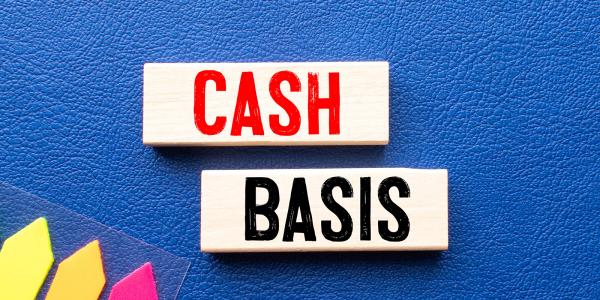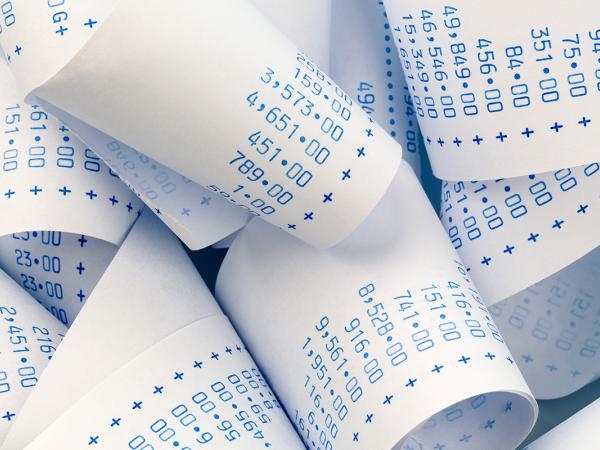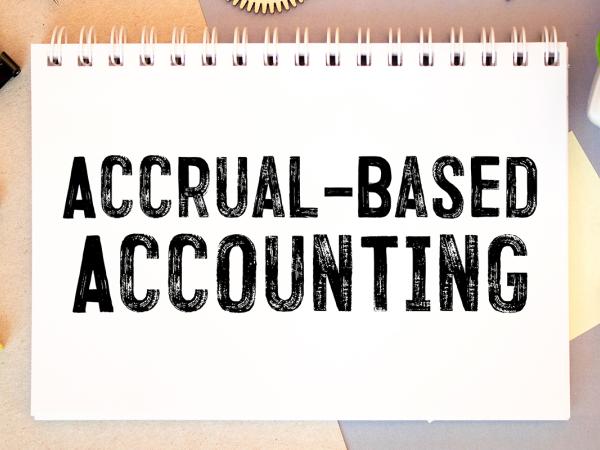Accounts: cash basis
Sole traders and partnerships must prepare business accounts to show all the income and expenses of the business for the period covered by the accounts. Traditionally, business accounts are prepared on an accruals basis, but smaller businesses may be able to use what is known as the ‘cash basis’, which is designed to be a simpler way of preparing accounts.
There are new rules for the cash basis starting from April 2024, we explain the old rules in detail for when completing your 2023/24 self assessment tax return and provide a summary of the new cash basis rules which will be in place for the 2024/25 tax year onwards.

Content on this page:
General principles
Whereas the accruals basis looks at income earned and expenses incurred, the cash basis allows businesses to account for their income and expenses when they actually receive payment or when they actually pay for an expense. By using the cash basis, you will not need to calculate debtors and creditors at the year-end, nor perform a stock-take or estimate accruals and prepayments as you would if you were using accruals basis accounting.
Under the cash basis, income is recorded when it is actually received. This may be a different date to the sales invoice. Expenses are recorded when they are actually paid; this may be a different date to when the expense is made, for example when stock is delivered or a purchase invoice is received.
There are no strict rules of when income receipts or expense payments should be recognised by a business using the cash basis, but a business must use a consistent approach.
For example, a business must decide what date to use when receiving payments by cheque; is it when the cheque is received from the customer? Or when it is paid into the bank? Or when it is shown on the bank account but cannot be drawn against? Or when the cheque has cleared? So, if a business decides to record income only after cheques have been cleared then that approach must be used consistently for all cheque receipts.
For the 2023/24 tax year, if you want to use the cash basis for your self-employed accounts, you must elect to do so on your self assessment tax return by ticking the relevant box in the self-employed section of the tax return as it is not the default option. This is box 8 on the short self-employment pages of the tax return or box 10 on the full self-employment pages. We cover how the cash basis works on the 2024/25 tax return under the heading, New cash basis rules, below.
Although HMRC expect businesses using the cash basis to have more simplified accounting than under the accruals basis, a business will still be expected to keep the proper business records required to complete an accurate self assessment tax return.
A business using the cash basis should still keep a record of its debtors, creditors and stock so that the business can work effectively.
Eligibility
This section explains the rules for the 2023/24 tax year and prior tax years. We cover how the cash basis works for the 2024/25 tax year onwards under the heading, New cash basis rules, below.
Most sole traders and partnerships with annual sales or turnover of less than £150,000 can elect on their self assessment tax return to use the cash basis.
For universal credit (UC) claimants the entry threshold is double, at £300,000.
If your business is VAT registered but has sales under the cash basis entry threshold of £150,000 (or £300,000 if claiming universal credit) you are allowed to elect to use the cash basis.
You must leave the cash basis the year after your turnover is higher than the exit threshold which is £300,000. We cover this is more detail under the heading Leaving the cash basis below.
If you have more than one business and you elect to use the cash basis for one of your businesses, then you must also use the cash basis for all your other businesses. The total of the turnover of all your businesses is used when looking at the entry and exit levels of the cash basis.
If you are a partner in a partnership, then you must look at the position of the controlling partner to see if you are eligible to use the cash basis. HMRC’s Business Income manual provides further guidance on this.
There are certain businesses that are not allowed to use the cash basis: these include partnerships where at least one of the partners is not an individual and self-employed people using the profit-averaging election. A complete list of the businesses that cannot use the cash basis can be found on GOV.UK.
Universal credit claimants
This section explains the rules for the 2023/24 tax year and prior tax years. We cover how the cash basis works for the 2024/25 tax year onwards under the heading, New cash basis rules, below.
If you are self-employed and claiming universal credit (UC) you can enter the cash basis if your turnover is less than £300,000 for the 2022/23 and 2023/24 tax years.
If you are self-employed and claiming UC then you will need to report your business income and expenses to the Department for Work and Pensions (DWP) on a monthly basis. Unfortunately, universal credit cash accounting is different to the self assessment optional cash basis.
Specific expenses rules
Interest and finance costs
This section explains the rules for the 2023/24 tax year and prior tax years. We cover how the cash basis works for the 2024/25 tax year onwards under the heading, New cash basis rules, below.
Under the cash basis, bank and loan interest costs and financing costs, which include bank loan arrangement fees, are allowed up to an annual amount of £500.
If the business has interest and finance costs of less than £500 then the split between business costs and any personal interest charges does not have to be calculated.
Businesses should consider their annual business interest and finance costs and if it is anticipated that these costs will be more than £500 it may be more appropriate for the business to use the accruals basis and obtain tax relief for all the business-related financing costs.
Interest on hire purchase and trade purchases are not included in the annual amount of £500 and can be treated as separate expenses.
Capital equipment
Most capital equipment can be treated as an expense under the cash basis, but this does not include land, buildings and cars (capital allowances can usually be claimed on cars). This means that capital allowances on eligible capital equipment (that is capital equipment other than cars) do not need to be calculated.
Any vehicles (apart from cars) purchased when using the cash basis must stay in the cash basis even if the business then switches to use the accruals basis (so you cannot claim the expense using the cash basis and then include the vehicle in a capital allowance pool).
Trading losses
This section explains the rules for the 2023/24 tax year and prior tax years. We cover how the cash basis works for the 2024/25 tax year onwards under the heading, New cash basis rules, below.
We explain about the various ways trading losses can be used to reduce your tax in detail on our Trading losses page. Under the cash basis, any trade losses can be carried forward to be offset against business profits in the future. It is not possible to carry losses back to be used against profits made in the previous three tax years (unless your business stops trading) or to use losses against other income earned during the same tax year (known as sideways loss relief) as you can do if you prepare accounts on the accruals basis.
If your business has made losses during the 2023/24 tax year, then it may not be appropriate to use the cash basis as there are more ways to get tax relief for losses by using the accruals basis.
Leaving the cash basis
This section explains the rules for the 2023/24 tax year and prior tax years. We cover how the cash basis works for the 2024/25 tax year onwards under the heading, New cash basis rules, below.
If you elect to use the cash basis then you must continue to use it until either:
- your turnover increases above the exit threshold of £300,000, or
- there are commercial reasons for leaving the cash basis (these include having financing costs of over £500 per annum or wanting to use sideways loss relief).
The following illustration shows when it may be appropriate to change from the cash basis for commercial reasons.
After leaving the cash basis, you will have to use the accruals basis unless your turnover becomes lower than £150,000, in which case you can choose to elect to use the cash basis again if you want to.
Changing to accruals basis
If you leave the cash basis then there are transitional rules when changing to the accruals basis. These rules are to ensure that overall taxable profits are correct by taxing income and deducting all expense payments only once.
The steps you will need to take to move from the cash basis to the accruals basis are made during the first year of using the accruals basis, but the tax adjustment is spread over six years. However, this six-year period can be shortened if you prefer. The best way to explain this is by considering an example:
The spreading adjustment
When leaving the cash basis, any additional income arising from the move to the accruals basis is spread over six years and taxed 1/6th in each year. If you do not want to spread the adjustment income over six years you can elect to accelerate the charge and decide how much you want it to be in each tax year.
New cash basis rules
From the 2024/25 tax year onwards the rules for the cash basis are changing as HMRC want to encourage more people to use it. However, certain businesses will still not be eligible to use it or may want to choose to use the accruals basis instead.
If you decide to use the cash basis when completing your 2023/24 tax return, then you should follow the old rules as explained above. However, you may want to understand what the changes to the cash basis are, as it may help you decide how to prepare your accounts and what business records to keep during the 2024/25 tax year.
In summary, the new rules are:
- There are no entry or exit thresholds. This means you can use the cash basis from the 2024/25 tax year onwards if you have turnover above the current threshold of £150,000 (or £300,000 for universal credit claimants). This also means that partnerships no longer have to consider the position of any controlling partner to see if they are eligible to use the cash basis.
- The cash basis will be the default method of reporting your accounts from the 2024/25 tax return. You can choose to use the accruals basis (some businesses can only use the accruals basis if they are not eligible to use the cash basis) by electing to do so on your tax return. For the 2023/24 tax returns and previous tax years you had to elect to use the cash basis as the accruals basis was the default method.
- If you have more than one self-employment you no longer need to use the cash basis for all your businesses, you can decide for each trade individually.
- The trading loss rules have changed so it is possible to use the same trading loss reliefs available to businesses using the accruals basis. This means that from 2024/25, losses arising when using the cash basis can be offset against other taxable income in the same tax year (known as sideways loss relief) or carried back against taxable income in the previous tax year. See our Trading losses page for more information.
- The £500 restriction on interest and finance costs is being removed when these expenses are made wholly and exclusively for the purpose of the trade. For example, if your business loan charged £800 interest in the 2024/25 year you can use the cash basis and have tax relief on the full £800 (it will not be restricted to £500 as per the pre 2024/25 rules where you miss out on tax relief on £300).
More information
Our guide to self-employment is intended to supplement the material in this section. We wrote this guide to help advisers (non-tax) who advise low-income self-employed individuals and also for self-employed people who want more detailed information in one accessible place. The guide explains the less common tax rules and contains more detailed information including a case study showing how to prepare accounts and what to include on your 2023/24 tax return when using the cash basis.



